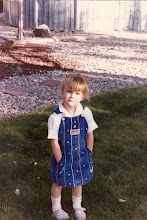This past March, I had the distinct privilege of traveling with my department to Berlin. We were invited to make work at Skulpturenpark - a former site of the Berlin Wall. The park is not officially a park, but rather a collection of dozens of undeveloped lots located in the center of the city. Development disputes since the fall of The Wall left the land vulnerable to repurposing, and for the past several years, under the direction of artist group KUNSTrePUBLIK e.V., has functioned (at least in part) as a public art space.
When considering concepts for potential site-specific projects for exhibition in Skulpturenpark, I had to consider what socio-historical/political/geopraphical issues I felt comfortable commenting on as an American who, prior to that journey, had not been over seas. Ultimately, although while tapping into the aforementioned topics, my project took its inspiration in part from my own linguistic concerns, for the successful completion of the project was contingent on my ability to communicate in a foreign place.
Cognates provided the necessary entry-point. The word “cognate” defines two entities related in the sharing of a common ancestor. In linguistics, cognate describes a word that shares a mutual root with an analog in another language. Because English is a Germanic language, it shares countless cognate words with German. For example, the German word for “my” is “mein,” which with a slight rearrangement of letters can be translated to the English “mine." This rather literal idea about linguistic relationships evolved into more abstract considerations of the relevance of particular words to a specific physical space. Language and geography are directly linked in the fact that language suggests of the speaker a place of origin. Place is manifested in language and, in this way, has ownership of the language and those who speak it (and vice versa). With these concepts in mind, I constructed a piece which addressed ideas of ownership (both geographical and psychological), language barriers/cognate relationships, and that darn Wall in an interactive art piece.
I made large-scale versions of the letters M, I, N, and E. The I and the N were built upon stationary bases, while the M and E had casters, allowing for the letters to be arranged in one of two orientations, spelling either the English word “MINE,” or the German translation, “MEIN.” The near-human scale of each letter of the piece allowed it to function as a physical barrier while the mechanism for “translating” the word facilitated in accommodating both German and English-speakers in “labeling,” or claiming ownership of, the surrounding space.





No comments:
Post a Comment